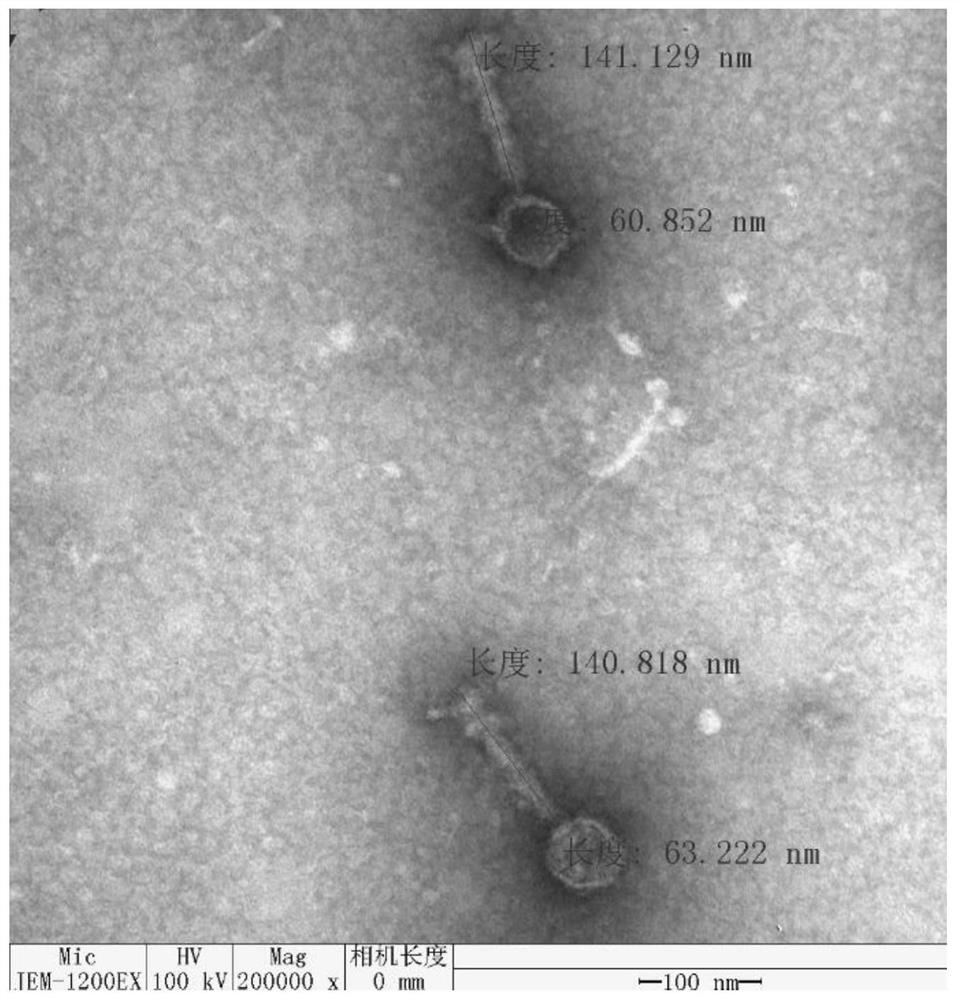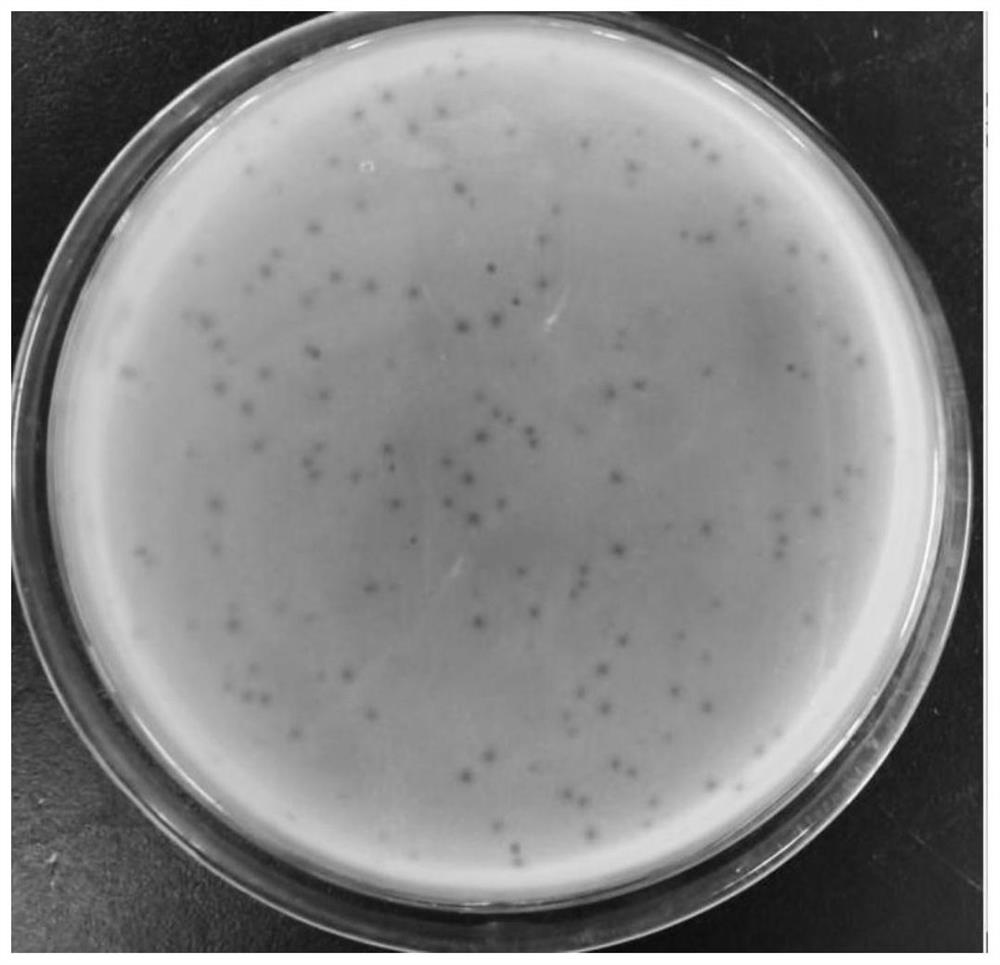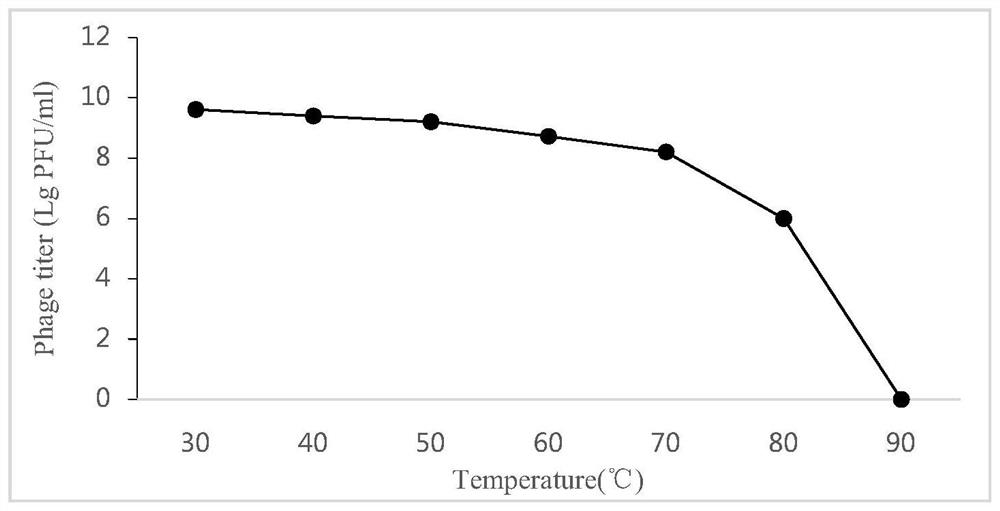A Phage of Aeromonas hydrophila and Its Application
A technology of Aeromonas hydrophila and bacteriophage, applied in the direction of bacteriophage, virus/bacteriophage, application, etc., can solve the problems of high concentration and low virulence of bacteriophage, and achieve short incubation period, good stability and activity, good adaptive effect
- Summary
- Abstract
- Description
- Claims
- Application Information
AI Technical Summary
Problems solved by technology
Method used
Image
Examples
Embodiment 1
[0053] Example 1: Isolation and preparation of phage
[0054] The freshwater fish viscera sample among the present invention is collected from Wuma Market, Tai'an City, Shandong Province;
[0055] The host bacterium was Aeromonas hydrophila CVCC4002, which was purchased from China Veterinary Microbiology Culture Collection Management Center.
[0056] Fill 20mL Tris-HCl buffer into a 50mL centrifuge tube, then add a small amount of freshwater fish viscera samples, and let it stand overnight at 4°C. The sample was centrifuged at 8000r / min for 10min to remove impurities, and the supernatant was centrifuged at 4000r / min for 10min and filtered with a 0.22μm microporous filter to obtain the filtrate and save it.
[0057] Take the above 20mL filtrate and add it to 20mL TSB medium, then add 1mL suspension of host bacteria (Aeromonas hydrophila CVCC4002) in the logarithmic growth phase, mix well and culture overnight at 30°C with shaking. The next day, centrifuge at 8000r / min for 30m...
Embodiment 2
[0058] Embodiment 2: Amplification culture and purification of phage
[0059] Use a pipette tip to pick out larger diameter plaques, place them in buffer (Tris-HCl buffer), place at 4°C for 3 hours, make 10-fold gradient dilution with buffer, double-layer plate (bottom TSA solid, upper layer TSB +0.75% agar semi-solid) method for single-spot culture. Pick a single phage plaque with a larger diameter and place it in the host bacterial solution (the amount of bacteria is about 10 8 CFU / mL) in liquid TSB medium for 6 hours for a small amount of proliferation, and then observe the morphology of the plaques by the double-layer plate method. After repeating the operation 3 to 5 times, the plaques with the same shape and size can be obtained. Pick a single phage plaque and place it in Tris-HCl buffer, transfer it into 3-5mL TSB medium, add 0.1mL of phage host bacterial solution, mix well, act at room temperature for 15min, and incubate at 30°C for 10-14h , 12000rpm, 4°C, centrifuge...
Embodiment 3
[0068] Example 3: Effects of temperature and pH on the stability of bacteriophage BLCC16-001
[0069] With reference to the method recorded in the patent CN107099511A, the temperature and pH are investigated for the stability of the phage, as follows:
[0070] Take 0.5mL10 each 9 The phage liquid of PFU / mL was placed in a sterile EP tube, and reacted in a water bath at 30°C, 40°C, 50°C, 60°C, 70°C, 80°C, and 90°C for 60 minutes respectively. The sample was cooled in a water bath, and the titer of the phage was determined after dilution. The results are shown in image 3 . Depend on image 3 It can be seen that the titer of Aeromonas hydrophila phage BLCC16-001 was basically unchanged after being treated at 30°C, 40°C, 50°C, and 60°C for 1 hour, and the titer decreased by an order of magnitude after being treated at 70°C for 1 hour, and after being treated at 80°C for 1 hour Afterwards, the titer decreased by 2 orders of magnitude, and all of them were inactivated after be...
PUM
 Login to View More
Login to View More Abstract
Description
Claims
Application Information
 Login to View More
Login to View More - R&D
- Intellectual Property
- Life Sciences
- Materials
- Tech Scout
- Unparalleled Data Quality
- Higher Quality Content
- 60% Fewer Hallucinations
Browse by: Latest US Patents, China's latest patents, Technical Efficacy Thesaurus, Application Domain, Technology Topic, Popular Technical Reports.
© 2025 PatSnap. All rights reserved.Legal|Privacy policy|Modern Slavery Act Transparency Statement|Sitemap|About US| Contact US: help@patsnap.com



